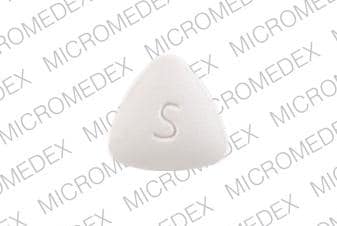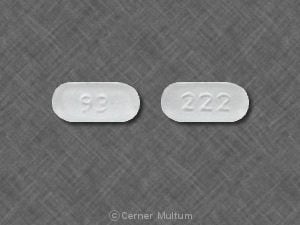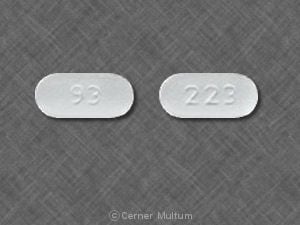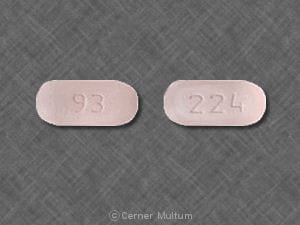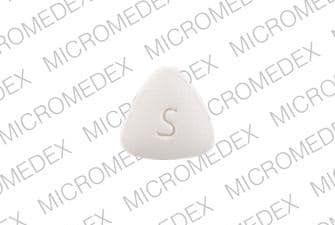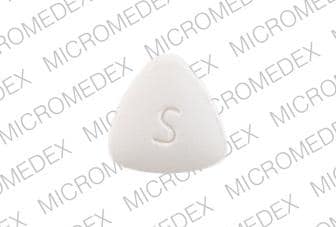Dosage Forms
Excipient information presented when available (limited, particularly for generics); consult specific product labeling. [DSC] = Discontinued product
Exhaler Powder, Nasal, as succinate [strength expressed as base]:
Onzetra Xsail: 11 mg per nosepiece (2 ea)
Solution, Nasal:
Imitrex: 5 mg/actuation (1 ea); 20 mg/actuation (1 ea)
Tosymra: 10 mg/actuation (1 ea)
Generic: 5 mg/actuation (1 ea); 20 mg/actuation (1 ea)
Solution, Subcutaneous, as succinate [strength expressed as base]:
Generic: 6 mg/0.5 mL (0.5 mL)
Solution, Subcutaneous, as succinate [strength expressed as base, preservative free]:
Imitrex: 6 mg/0.5 mL (0.5 mL)
Generic: 6 mg/0.5 mL (0.5 mL)
Solution Auto-injector, Subcutaneous, as succinate [strength expressed as base, preservative free]:
Imitrex STATdose System: 4 mg/0.5 mL (0.5 mL); 6 mg/0.5 mL (0.5 mL)
Zembrace SymTouch: 3 mg/0.5 mL (0.5 mL)
Generic: 4 mg/0.5 mL (0.5 mL); 6 mg/0.5 mL (0.5 mL)
Solution Cartridge, Subcutaneous, as succinate [strength expressed as base, preservative free]:
Imitrex STATdose Refill: 4 mg/0.5 mL (0.5 mL); 6 mg/0.5 mL (0.5 mL)
Generic: 4 mg/0.5 mL (0.5 mL); 6 mg/0.5 mL (0.5 mL)
Solution Jet-injector, Subcutaneous, as succinate [strength expressed as base]:
Sumavel DosePro: 4 mg/0.5 mL (0.5 mL [DSC]); 6 mg/0.5 mL (0.5 mL)
Solution Prefilled Syringe, Subcutaneous, as succinate [strength expressed as base, preservative free]:
Generic: 6 mg/0.5 mL (0.5 mL)
Tablet, Oral, as succinate [strength expressed as base]:
Imitrex: 25 mg, 50 mg, 100 mg
Generic: 25 mg, 50 mg, 100 mg
Pharmacology
Mechanism of Action
Selective agonist for serotonin (5-HT1B and 5-HT1D receptors) on intracranial blood vessels and sensory nerves of the trigeminal system; causes vasoconstriction and reduces neurogenic inflammation associated with antidromic neuronal transmission correlating with relief of migraine
Pharmacokinetics/Pharmacodynamics
Distribution
Vd (central): SubQ: 50 L; Vd (apparent): Oral, Intranasal powder and solution: 2.7 L/kg
Metabolism
Hepatic to an indole acetic acid metabolite (inactive) which then undergoes ester glucuronide conjugation; may be metabolized by monoamine oxidase (MAO); extensive first-pass metabolism following oral administration
Excretion
Intranasal: Urine (42% of total dose as indole acetic acid metabolite; 3% of total dose as unchanged drug)
Oral: Urine (~60% of total dose, mostly as indole acetic acid metabolite; 3% of total dose as unchanged drug); feces (~40%)
SubQ: Urine (38% of total dose as indole acetic acid metabolite; 22% of total dose as unchanged drug)
Onset of Action
Oral: ~30 minutes; Intranasal: Solution: ~15 to 30 minutes; SubQ: ~10 minutes; Peak effect: Oral: 2 to 4 hours
Time to Peak
Oral: 2 to 2.5 hours; Intranasal: Powder: ~45 minutes; Spray: Median 10 minutes (range: 5 to 23 minutes); SubQ: 12 minutes (range: 4 to 20 minutes)
Half-Life Elimination
Distribution: 15 minutes; Terminal: 2 hours; range: 1 to 4 hours
Protein Binding
14% to 21%
Use in Specific Populations
Special Populations: Hepatic Function Impairment
Bioavailability following oral administration may be markedly increased in patients with hepatic disease.
Use: Labeled Indications
Cluster headache, acute: SubQ (excluding Zembrace): Acute treatment of cluster headache episodes in adults as monotherapy or in combination with 100% oxygen (May 2019)
Migraine, moderate to severe, acute: Intranasal, Oral, SubQ: Acute treatment of migraine with or without aura in adults
Use: Off Label
Cyclic vomiting syndrome (migraine associated), abortive therapyyes
Based on the American Neurogastroenterology and Motility Society and the Cyclic Vomiting Syndrome Association Guidelines on management of cyclic vomiting syndrome in adults, sumatriptan is an effective and recommended agent for abortive therapy in patients with migraine-associated cyclic vomiting syndrome Venkatesan 2019
Contraindications
Hypersensitivity (eg, angioedema, anaphylaxis) to sumatriptan or any component of the formulation; ischemic heart disease or signs or symptoms of ischemic heart disease (coronary artery vasospasm, Prinzmetal angina, angina pectoris, MI, silent myocardial ischemia); history of cerebrovascular syndromes (including strokes, transient ischemic attacks), history of hemiplegic or basilar migraine; peripheral vascular disease (including ischemic bowel disease); uncontrolled hypertension; use within 24 hours of ergotamine derivatives; use within 24 hours of another 5-HT1 agonist; concurrent administration or within 2 weeks of discontinuing an MAO type A inhibitors; Wolff-Parkinson-White syndrome or arrhythmias associated with other cardiac accessory conduction pathway disorders; severe hepatic impairment (excluding Sumavel)
Canadian labeling: Additional contraindications (not in the US labeling): Valvular heart disease; significant underlying cardiovascular disease (eg, atherosclerotic disease, congenital heart disease); ophthalmoplegic migraine
Dosage and Administration
Dosing: Adult
Note: Limit use to <10 days per month to avoid medication overuse headache (Canadian Headache Society [Worthington 2013]). Triptans should not be used within 24 hours of the use of an ergotamine preparation or a different triptan.
Cluster headache, acute: Note: As monotherapy or in combination with 100% oxygen. Some experts recommend initial treatment with only 100% oxygen if available (May 2019).
SubQ (preferred route): Initial: 6 mg once; a lower dose of 3 mg may be effective in select patients (Gregor 2005). If initial dose was effective but headache recurs, may repeat a dose (usually same as first dose) after ≥1 hour; some experts recommend waiting ≥2 hours before repeating a dose (May 2019). Maximum dose: 6 mg per dose; 12 mg in 24 hours.
Intranasal (alternative route) (off-label): Solution: Initial: 20 mg once in single nostril contralateral to side of headache (May 2019; van Vliet 2003). If initial dose was effective but headache recurs, may repeat the dose after ≥2 hours. Maximum dose: 40 mg in 24 hours.
Note: When treating acute cluster headache, following initiation of medication(s) for prevention of cluster headaches, patients with ≥2 headaches per day may temporarily receive >2 doses of sumatriptan per day (either SubQ or intranasal at usual dose and interval) until prophylaxis becomes effective, according to some experts (May 2019).
Cyclic vomiting syndrome (migraine associated), abortive therapy (off-label use): Note: To be administered during the prodrome or shortly after vomiting begins (eg, within 30 to 45 minutes); may be used alone for relatively mild or infrequent episodes. If symptoms are frequent or severe, may be used in conjunction with ongoing prophylactic therapy (ANMS/CVSA [Venkatesan 2019]; Li 2019).
Intranasal: 20 mg; may repeat after 2 hours in patients with no or partial response (maximum: 6 doses/week) (Li 2019).
SubQ: 6 mg; may repeat after 1 hour in patients with no or partial response (maximum: 6 doses/week) (Li 2019).
Migraine, moderate to severe, acute: Note: As monotherapy or in combination with an NSAID (eg, naproxen). Administer at first sign of headache. When attack is complicated by vomiting or severe nausea, use of a non-oral preparation is recommended as oral agents may be ineffective (CHS [Worthington 2013]; Derry 2012).
Oral: Initial: Usual: 50 to 100 mg once (CHS [Worthington 2013]; Derry 2012). If initial dose was partially effective or headache recurs, may repeat a dose (usually same as first dose) after ≥2 hours. Maximum dose: 100 mg per dose; 200 mg per 24 hours.
Intranasal:
Solution: Initial: Usual: 20 mg once in a single nostril. If initial dose was partially effective or headache recurs, may repeat the dose once after ≥2 hours. Maximum dose: 40 mg per 24 hours.
Powder, breath-activated: Initial: 22 mg once; using product-specific device, give as one 11 mg capsule insufflated in each nostril. If initial dose was partially effective or headache recurs, may repeat the dose once after ≥2 hours. Maximum dose: 44 mg per 24 hours. Refer to product-specific administration instructions.
Spray: Initial: 10 mg once in one nostril. If initial dose was partially effective or headache recurs, may repeat the dose once after ≥1 hour. Maximum dose: 30 mg per 24 hours. May also administer at least 1 hour following a dose of another sumatriptan product (use following another 5-HT1 agonist is contraindicated).
SubQ: Initial: Usual: 6 mg once. If initial dose was partially effective or headache recurs, may repeat a dose (usually same as first dose) after ≥1 hour. If 6 mg was not tolerated, subsequent doses of 1 to 5 mg may provide sufficient relief with better tolerability. Maximum dose: 6 mg per dose; 12 mg in 24 hours.
Dosing: Geriatric
Refer to adult dosing.
Dosing: Pediatric
Migraine: Note: Results of clinical studies are mixed with regards to efficacy, particularly with oral and SubQ sumatriptan doses; a 2004 practice parameter concluded that sumatriptan nasal spray was effective for the acute treatment of migraines in adolescent patients (AAN [Lewis 2004]).
Intranasal:
Children 5 to 12 years: Limited data available: 5 mg, 10 mg, or 20 mg administered in one nostril as a single dose as soon as possible after the onset of migraine; dose should be selected on an individual basis. A double-blind, placebo controlled study of 129 patients (mean age: 12.4 years; range: 8 to 17 years) used a weight-based dosing regimen: Body weight: 20 to 39 kg: 10 mg/dose; body weight ≥40 kg: 20 mg/dose; however, relatively few children <12 years old were included in the study (Ahonen 2004). A small, randomized, double-blind, placebo-controlled study of 14 children (range: 6 to 9 years; median: 8.2 years) used intranasal doses of 20 mg/dose (Ueberall 1999). A small, retrospective review of 10 children (range: 5 to 12 years; mean: 9.9 years), used intranasal doses of 5 mg (n=2) or 20 mg (n=8) (Hershey 2001).
Children ≥12 years and Adolescents ≤17 years: Limited data available: 5 mg, 10 mg, or 20 mg administered in one nostril as a single dose as soon as possible after the onset of migraine; dose should be selected on an individual basis (AAN [Lewis 2004]; Rothner 2000; Winner 2000; Winner 2006).
Adolescents ≥18 years: Initial single dose:
Powder: (Onzetra Xsail): 22 mg (11 mg nosepiece in each nostril). If headache has not resolved within 2 hours or returns, the dose may be repeated once ≥2 hours after the first dose (maximum: 44 mg [4 nosepieces] per 24 hours or 22 mg [2 nosepieces] and one dose of another sumatriptan product [separated by ≥2 hours] per 24 hours). The safety of treating an average of >4 headaches in a 30-day period has not been established.
Solution: 5 mg, 10 mg, or 20 mg administered in one nostril as soon as possible after the onset of migraine; dose should be selected on an individual basis. A 10 mg dose may be achieved by administering as 5 mg in each nostril. If headache has not resolved within 2 hours or returns, the dose may be repeated once after 2 hours, not to exceed a total daily dose of 40 mg. In clinical trials, a greater number of patients responded to initial doses of 20 mg versus 5 or 10 mg. The safety of treating an average of >4 headaches in a 30-day period has not been established.
Oral:
Adolescents ≤17 years: Limited data available; efficacy results variable; efficacy of oral sumatriptan was not established in five controlled trials in adolescent patients; frequency of adverse events was dose-related and age-dependent (ie, younger patients reported more adverse events).
Adolescents ≥18 years: Initial single dose: 25 mg, 50 mg, or 100 mg. If a satisfactory response has not been obtained at 2 hours, a second dose may be administered. Results from clinical trials show that initial doses of 50 mg and 100 mg are more effective than doses of 25 mg, and that 100 mg doses do not provide a greater effect than 50 mg and may have increased incidence of side effects. Maximum daily dose (cumulative 24 hours): 200 mg total dose/24 hours. The safety of treating an average of >4 headaches in a 30-day period have not been established.
SubQ:
Children ≥6 years and Adolescents ≤17 years: 3 to 6 mg single dose. An open-labeled prospective trial of 17 children 6 to 16 years with juvenile migraine used SubQ doses of 6 mg in 15 patients weighing 30 to 70 kg, and 3 mg/dose in two children weighing 22 kg and 30 kg (MacDonald 1994). Another open-label prospective trial in 50 consecutive children (ages 6 to 18 years) with severe migraine used SubQ doses of 0.06 mg/kg/dose. Relief was reported as good/excellent in 84% of the patients; 16% reported fair to poor relief; additional studies are needed (Linder 1996).
Adolescents ≥18 years:
Imitrex, Sumavel: Initial: 6 mg; if side effects are dose limiting, use lower doses: Imitrex: 1 to 5 mg or Sumavel: 4 mg. May repeat if needed ≥1 hour after initial dose; maximum dose: 6 mg/dose; cumulative maximum 24-hour dose: 12 mg total dose (two 6 mg injections). Controlled clinical trials have failed to document a benefit with administration of a second 6 mg dose in nonresponders.
Zembrace: Initial: 3 mg; after 1 hour may repeat dose if needed up to 4 injections separated by at least 1 hour; may also administer following the dose of another sumatriptan product if separated by at least 1 hour; cumulative maximum 24-hour dose: 12 mg total dose.
Cyclic vomiting syndrome; abortive therapy: Limited data available: Note: Doses should be administered as soon as possible at the onset of prodromal symptoms which may include nausea, lethargy, headache, or phono/photophobia (Kovacic 2018; Li 1999; Li 2018). Dosing based on a small open-label trial (n=12; age range: 3 to 24 years), case reports, and expert clinical reports and recommendations (Benson 1995; Hikita 2011; Kakisaka 2009; Kovacic 2018; NASPGHAN [Li 2008]); in the small open-label trial, efficacy was reported with subcutaneous therapy (n=11; 35 attacks) in 54% of attacks and intranasal therapy (n=5; 6 attacks) was found completely or partially effective in 33.3% of attacks (Hikita 2011).
Intranasal: Solution: Children ≥12 years and Adolescents: 20 mg administered as a single dose in 1 nostril (Hikita 2011; Kakisaka 2009; Kovacic 2018; NASPGHAN [Li 2008]).
SubQ: Adolescents: 3 to 6 mg as a single dose (Benson 1995; Kovacic 2018).
Extemporaneously Prepared
A 5 mg/mL oral liquid preparation made from tablets and one of three different vehicles (Ora-Sweet®, Ora-Sweet® SF, or Syrpalta® syrups). Note: Ora-Plus® Suspending Vehicle is used with Ora-Sweet® or Ora-Sweet® SF to facilitate dispersion of the tablets (Ora-Plus® is not necessary if Syrpalta® is the vehicle). Crush nine 100 mg tablets in a mortar and reduce to a fine powder. Add 40 mL of Ora-Plus® in 5 mL increments and mix thoroughly between each addition; rinse mortar and pestle 5 times with 10 mL of Ora-Plus®, pouring into bottle each time, and add quantity of appropriate syrup (Ora-Sweet® or Ora-Sweet® SF) sufficient to make 180 mL. Store in amber glass bottles in the dark; label "shake well", "refrigerate", and "protect from light". Stable for 21 days refrigerated.
Fish DN, Beall HD, Goodwin SD, et al, "Stability of Sumatriptan Succinate in Extemporaneously Prepared Oral Liquids," Am J Health Syst Pharm, 1997, 54(14):1619-22.9248606
Administration
Administer as soon as symptoms appear.
Intranasal:
Powder: For intranasal administration with the Xsail device only. Remove the clear device cap from the reusable delivery device; remove one 11 mg disposable nosepiece from the foil pouch and click into the device body. Prior to administration, pierce the capsule inside the nosepiece by pressing and releasing the white piercing button one time on the device body. Insert the nosepiece into one nostril so there is a tight seal; rotate the device to place the mouthpiece in the mouth. Blowing forcefully through the mouthpiece for 2 to 3 seconds will deliver the powder into the nasal cavity; vibration may occur. Do not press white button while blowing into mouthpiece. Once administered into the first nostril, remove and discard nosepiece; repeat same process using a second 11 mg nosepiece into the other nostril to administer the remainder of the 22 mg dose.
Solution: Each nasal spray unit is preloaded with 1 dose; do not test the spray unit before use; remove unit from plastic pack when ready to use; while sitting down, gently blow nose to clear nasal passages; keep head upright and close one nostril gently with index finger; hold container with other hand, with thumb supporting bottom and index and middle fingers on either side of nozzle; insert nozzle into nostril about 1/2 inch; close mouth; take a breath through nose while releasing spray into nostril by pressing firmly on blue plunger; remove nozzle from nostril; keep head level for 10 to 20 seconds and gently breathe in through nose and out through mouth; do not breathe deeply.
Spray: Each nasal spray unit is preloaded with 1 dose; do not test the spray unit before use; remove unit from plastic pack when ready to use; while sitting down, gently blow nose to clear nasal passages; keep head upright and close one nostril gently with index finger; hold container with other hand, with thumb supporting bottom and index and middle fingers on either side of nozzle; insert half of the spray nozzle into nostril and angle outward; tilt head back slightly and breath slowly through nose while releasing spray into nostril by pressing firmly on plunger; remove nozzle from nostril; keep head level for 10 to 20 seconds and gently breathe in through nose and out through mouth; do not breathe deeply.
SubQ: Not for IM or IV use. Needle penetrates 1/4 inch of skin; use in areas of the body with adequate skin and subcutaneous thickness (lateral thigh or upper arm). In patients receiving doses other than 4 or 6 mg, use the 6 mg single-dose vial instead of the autoinjector device.
Needleless administration (Sumavel DosePro): Administer to the abdomen (>2 inches from the navel) or thigh; not for IM or IV administration. Do not administer to other areas of the body (eg, arm). Device is for single use only, discard after use; do not use if the tip of the device is tilted or broken.
Storage
Injectable:
Imitrex: Store at 2°C to 30°C (36°F to 86°F). Protect from light.
Sumavel DosePro, Zembrace: Store at 20°C to 25°C (68°F to 77°F); excursions are permitted between 15°C and 30°C (59°F and 86°F); do not freeze (Sumavel DosePro). Protect from light.
Intranasal:
Powder: Store at 20°C to 25°C (68°F to 77°F); excursions are permitted between 15°C and 30°C (59°F and 86°F); do not refrigerate or freeze. Use nosepiece immediately after removing from pouch.
Solution: Store at 20°C to 25°C (68°F to 77°F); excursions are permitted between 15°C and 30°C (59°F and 86°F); do not refrigerate or freeze.
Spray: Store at 20°C to 25°C (68°F to 77°F); excursions are permitted between 15°C and 30°C (59°F and 86°F); do not refrigerate or freeze.
Oral: Tablet: Store at 20°C to 25°C (68°F to 77°F); excursions are permitted between 15°C and 30°C (59°F and 86°F); do not refrigerate or freeze.
SUMAtriptan Images
Drug Interactions
Droxidopa: Serotonin 5-HT1D Receptor Agonists (Triptans) may enhance the hypertensive effect of Droxidopa. Monitor therapy
Ergot Derivatives: May enhance the vasoconstricting effect of Serotonin 5-HT1D Receptor Agonists (Triptans). Serotonin 5-HT1D Receptor Agonists (Triptans) may enhance the vasoconstricting effect of Ergot Derivatives. Exceptions: Nicergoline. Avoid combination
Monoamine Oxidase Inhibitors: Serotonin 5-HT1D Receptor Agonists (Triptans) may enhance the serotonergic effect of Monoamine Oxidase Inhibitors. This could result in serotonin syndrome. Monoamine Oxidase Inhibitors may increase the serum concentration of Serotonin 5-HT1D Receptor Agonists (Triptans). Exceptions: Rasagiline; Safinamide; Selegiline. Avoid combination
Serotonergic Agents (High Risk): Serotonin 5-HT1D Receptor Agonists (Triptans) may enhance the serotonergic effect of Serotonergic Agents (High Risk). This could result in serotonin syndrome. Management: Monitor for signs and symptoms of serotonin syndrome/serotonin toxicity (eg, hyperreflexia, clonus, hyperthermia, diaphoresis, tremor, autonomic instability, mental status changes) when these agents are combined. Exceptions: Isocarboxazid; Linezolid; Methylene Blue; Moclobemide; Phenelzine; Tranylcypromine. Monitor therapy
Serotonin 5-HT1D Receptor Agonists (Triptans): May enhance the adverse/toxic effect of SUMAtriptan. Avoid combination
Adverse Reactions
Injection:
>10%:
Central nervous system: Tingling sensation (14%), dizziness (≤12%), vertigo (≤12%), feeling hot (≤11%)
Local: Injection site reaction (30% to 59%), warm sensation at injection site (≤11%)
1% to 10%:
Cardiovascular: Flushing (7%), chest discomfort (5%), chest tightness (3%), chest pressure (2%)
Central nervous system: Burning sensation (7%), feeling of heaviness (7%), sensation of pressure (7%), numbness (5%), paresthesia (5%), sensation of tightness (5%), drowsiness (≤3%), sedated state (≤3%), local discomfort (jaw or throat: 2% to 3%), headache (2%), strange feeling (2%), tight feeling in the head (2%)
Dermatologic: Diaphoresis (2%)
Gastrointestinal: Nausea and vomiting (4%)
Neuromuscular & skeletal: Asthenia (5%), neck pain (≤5%), neck stiffness (≤5%), myalgia (2%)
Respiratory: Nasal discomfort (nasal cavity: ≤2%), sinus discomfort (≤2%), bronchospasm (1%)
Nasal:
>10%:
Gastrointestinal: Dysgeusia (≤25%), unusual taste (≤25%), nausea (≤14%), vomiting (≤14%)
Respiratory: Nasal discomfort (≤11%)
1% to 10%:
Central nervous system: Localized numbness (≤5%), nasal cavity pain (≤5%), paresthesia (≤5%), dizziness (≤2%), vertigo (≤2%), localized burning (1%)
Local: Local irritation (≤5%)
Respiratory: Rhinorrhea (≤5%), sore nose (≤5%), nasal signs and symptoms (≤4%), sinus discomfort (≤4%), rhinitis (2%)
Tablet:
1% to 10%:
Cardiovascular: Hot and cold flashes (3%), chest pain (≤2%), chest pressure (≤2%), chest tightness (≤2%)
Central nervous system: Pain (≤8%), sensation of pressure (≤8%), paresthesia (3% to 5%), fatigue (≤3%), feeling of heaviness (≤3%), malaise (≤3%), sensation of tightness (≤3%), heaviness of chest (≤2%), vertigo (2%)
Gastrointestinal: Sore throat (≤3%)
Local: Local pain (2%)
Neuromuscular & skeletal: Jaw pain (≤3%), jaw pressure (≤3%), jaw tightness (≤3%), neck pain (≤3%)
Respiratory: Pharyngeal edema (≤3%)
Route unspecified:
Frequency not defined:
Cardiovascular: Ischemia, Raynaud's disease
Hematologic & oncologic: Splenic infarction
<1%, postmarketing, and/or case reports: Acute myocardial infarction, anaphylaxis, angioedema, blindness, cerebral hemorrhage, cerebrovascular accident, dystonia, epistaxis, heaviness in neck (includes jaw or throat), hypersensitivity reaction, hypotension, neck pressure, neck tightness, nonimmune anaphylaxis, palpitations, seizure, significant cardiovascular event, subarachnoid hemorrhage, tremor, vision loss (partial)
Warnings/Precautions
Concerns related to adverse effects:
- Anaphylactic/anaphylactoid reactions: Anaphylactic, anaphylactoid, and hypersensitivity reactions (including angioedema) have been reported; may be life threatening or fatal.
- Cardiac events: Coronary artery vasospasm, transient ischemia, myocardial infarction, ventricular tachycardia/fibrillation, cardiac arrest, and death have been reported with 5-HT1 agonist administration (some occurring within a few hours of administration). Discontinue sumatriptan if these events occur. Patients who experience sensations of chest pain/pressure/tightness or symptoms suggestive of angina following dosing should be evaluated for coronary artery disease or Prinzmetal angina before receiving additional doses; if dosing is resumed and similar symptoms recur, monitor with ECG.
- Cerebrovascular events: Cerebral/subarachnoid hemorrhage and stroke (may be fatal) have been reported with 5-HT1 agonist administration. Discontinue sumatriptan if a cerebrovascular event occurs.
- CNS depression: May cause CNS depression, such as dizziness, weakness, or drowsiness, which may impair physical or mental abilities; patients must be cautioned about performing tasks which require mental alertness (eg, operating machinery or driving).
- Elevated blood pressure: Significant elevation in blood pressure, including hypertensive crisis, has been reported on rare occasions in patients with and without a history of hypertension. Use is contraindicated in patients with uncontrolled hypertension.
- Ocular effects: Transient and permanent blindness and significant partial vision loss have been reported (rare) with use of 5-HT1 agonist.
- Serotonin syndrome: Serotonin syndrome may occur with 5-HT1 agonists, particularly when used concomitantly with other serotonergic drugs; symptoms (eg, diarrhea, hyperreflexia, hyperthermia, incoordination, mental status changes, nausea, tachycardia, vomiting) typically occur minutes to hours after initiation/dose increase of a serotonergic drug. Discontinue use if serotonin syndrome is suspected.
- Vasospasm-related events: Peripheral vascular ischemia, GI vascular ischemia and infarction, splenic infarction, and Raynaud syndrome have been reported with 5-HT1 agonists.
Disease-related concerns:
- Coronary artery disease: Perform a cardiovascular evaluation in 5-HT1 agonists-naive patients who have risk factors for CAD (eg, hypertension, hypercholesterolemia, smoker, obesity, diabetes, strong family history of CAD, menopause, male >40 years of age) prior to initiation of therapy. Patients with suspected CAD should have cardiovascular evaluation to rule out CAD before considering use; if cardiovascular evaluation is “satisfactory,” first dose should be given in the health care provider's office (consider ECG monitoring). Periodic evaluation of cardiovascular status should be done in these patients during intermittent long-term use.
- Hepatic impairment: Use oral formulations of sumatriptan with caution (and with dosage limitations) in patients with mild to moderate hepatic impairment where treatment is necessary and advisable. Presystemic clearance of orally administered sumatriptan is reduced in hepatic impairment, leading to increased plasma concentrations; dosage reduction of the oral product is recommended. Non-oral routes of administration (intranasal, subcutaneous) do not undergo similar hepatic first-pass metabolism and are not expected to result in significantly altered pharmacokinetics in patients with hepatic impairment. Use of the oral, intranasal, Imitrex, and Zembrace injectable is contraindicated in severe hepatic impairment; Sumavel is not recommended in severe hepatic impairment.
- Seizure disorders: Use with caution in patients with history of seizure disorder or in patients with a lowered seizure threshold; seizures have been reported after sumatriptan administration in patients with or without a history of seizures.
Concurrent drug therapy issues:
- Drug-drug interactions: Potentially significant interactions may exist, requiring dose or frequency adjustment, additional monitoring, and/or selection of alternative therapy. Consult drug interactions database for more detailed information.
Special populations:
- Elderly: Use with caution; perform a cardiovascular evaluation prior to initiation of therapy in elderly patients with cardiovascular risk factors (eg, diabetes, hypertension, smoking, obesity, strong family history of coronary artery disease) and periodically during intermittent long-term use.
Dosage form specific issues:
- Intranasal formulations: May cause application site reactions (burning, numbness, paresthesia, discharge, pain or soreness), changes in taste, and throat irritation.
- Latex: The packaging (needle cover of prefilled syringe) may contain dry natural rubber, which is a derivative of latex.
Other warnings/precautions:
- Appropriate use: Only indicated for the acute treatment of migraine or cluster headache (depending on product); not indicated for migraine or cluster headache prophylaxis, or for the treatment of hemiplegic or basilar migraine. Acute migraine agents (eg, 5-HT1 agonists, opioids, ergotamine, or a combination of the agents) used for 10 or more days per month may lead to worsening of headaches (medication overuse headache); withdrawal treatment may be necessary in the setting of overuse. If a patient does not respond to the first dose, the diagnosis of migraine or cluster headache should be reconsidered; rule out underlying neurologic disease in patients with atypical headache and in patients with no prior history of migraine or cluster headache.
Monitoring Parameters
Headache severity, blood pressure, signs/symptoms suggestive of angina; perform a cardiovascular evaluation prior to initiation of therapy in 5-HT1 agonist-naive patients who have multiple cardiovascular risk factors (eg, increased age, diabetes, hypertension, smoking, obesity, strong family history of CAD); monitor ECG with first dose in patients with multiple cardiovascular risk factors who have a negative cardiovascular evaluation and consider periodic cardiovascular evaluation in such patients during intermittent long-term use.
Pregnancy
Pregnancy Considerations
In a study using full-term, healthy human placentas, limited amounts of sumatriptan were found to cross the placenta (Schenker 1995).
Pregnancy outcome information for sumatriptan is available from a pregnancy registry sponsored by GlaxoSmithKline. As of September 2012, data were available for 617 pregnancies (626 infants/fetuses) exposed to sumatriptan (including 7 pregnancies also exposed to naratriptan). Following sumatriptan exposure, the risk of major birth defects following first trimester exposure was 4.2% and no consistent pattern of birth defects was observed. The pregnancy registry was closed to enrollment in January 2012 (Ephross 2014).
An analysis of data collected between 1995 and 2008 using the Swedish Medical Birth Register reported pregnancy outcomes following 5-HT1B/1D agonist exposure. An increased risk of major congenital malformations was not observed following sumatriptan exposure (2,229 exposed during the first trimester) (Källén 2011). An increased risk of major congenital malformations was also not observed using data collected from a Norwegian pregnancy registry study. This study included 415 women who used sumatriptan during the first trimester of pregnancy between 2004 and 2007 (Nezvalová-Henriksen 2013).
If acute treatment for cluster headaches is needed during pregnancy, use of sumatriptan may be considered (Jürgens 2009; VanderPluym 2016). Other agents are preferred for the initial treatment of migraine in pregnancy; however, sumatriptan may be considered if first-line agents fail (CHS [Worthington 2013]; MacGregor 2014).
Patient Education
What is this drug used for?
- It is used to treat migraine headaches.
- It is used to treat cluster headaches.
Frequently reported side effects of this drug
- Flushing
- Feeling of warmth
- Loss of strength and energy
- Fatigue
- Change in taste
- Burning in nose
- Stuffy nose
- Sore throat
- Runny nose
- Injection site irritation
Other side effects of this drug: Talk with your doctor right away if you have any of these signs of:
- Severe cerebrovascular disease like change in strength on one side is greater than the other, trouble speaking or thinking, change in balance, or vision changes.
- Heart attack like chest pain; pain in arms, back, neck, jaw, or abdomen; shortness of breath; cold sweats; severe dizziness; passing out; or severe nausea or vomiting.
- Abnormal heartbeat
- Fast heartbeat
- Seizures
- Blindness
- Severe headache
- Severe dizziness
- Passing out
- Vision changes
- Burning or numbness feeling
- Blue/gray skin discoloration
- Constipation
- Diarrhea
- Severe nausea
- Vomiting
- Severe abdominal pain
- Bloody diarrhea
- Weight loss
- Leg cramps or pain
- Sensation of cold
- Feeling of heaviness in legs
- Burning or aching of feet
- Serotonin syndrome like dizziness, severe headache, agitation, sensing things that seem real but are not, fast heartbeat, abnormal heartbeat, flushing, tremors, sweating a lot, change in balance, severe nausea, or severe diarrhea.
- Signs of a significant reaction like wheezing; chest tightness; fever; itching; bad cough; blue skin color; seizures; or swelling of face, lips, tongue, or throat.
Note: This is not a comprehensive list of all side effects. Talk to your doctor if you have questions.
Consumer Information Use and Disclaimer: This information should not be used to decide whether or not to take this medicine or any other medicine. Only the healthcare provider has the knowledge and training to decide which medicines are right for a specific patient. This information does not endorse any medicine as safe, effective, or approved for treating any patient or health condition. This is only a brief summary of general information about this medicine. It does NOT include all information about the possible uses, directions, warnings, precautions, interactions, adverse effects, or risks that may apply to this medicine. This information is not specific medical advice and does not replace information you receive from the healthcare provider. You must talk with the healthcare provider for complete information about the risks and benefits of using this medicine.
